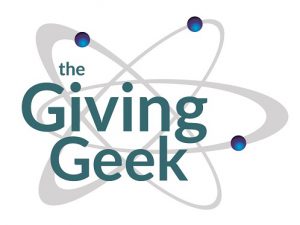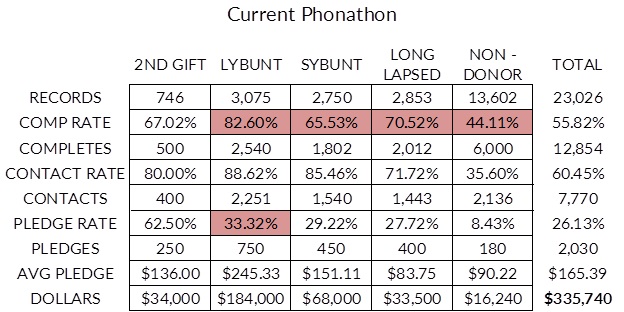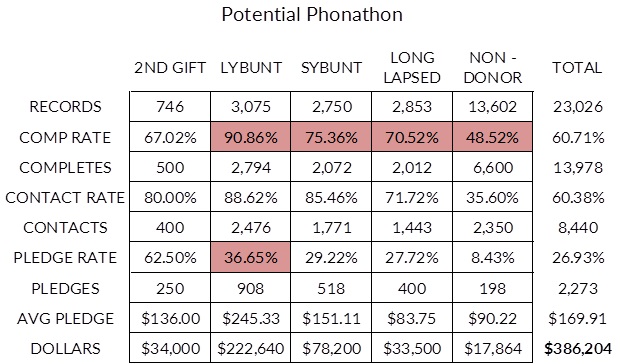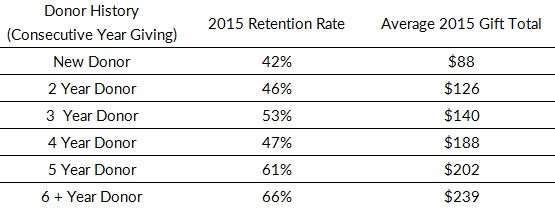fundraising
Where’s Waldo: Finding a focus for your next fundraising improvement

Martin Handford was a commercial illustrator specializing in crowd pictures. In 1987, he threw a kooky guy in a red striped shirt into a complex scene and challenged us to find him. Since then, finding Waldo has been a great way to keep our kids busy, and just plain fun for all of us.
It’s fun because it’s a challenge. Waldo hides pretty well in the crowd and we struggle to point him out buried in there. There’s some great research on how our brains learn to switch modes and pick out a specific, important thing through the field of noise. Can we apply it to fundraising strategy?
First, what’s going on in your annual fund “scene?”
- Are your total donors increasing, declining?
- Are total dollars stagnant, or worse, going down?
- Do you have goals for both dollars and donors and need
 to figure out where to put your resources?
to figure out where to put your resources? - Do you feel like you’re throwing money at appeals but can’t figure out if they are really working?
The answer to growing your results and where to spend your resources is probably not just doing more of the same thing. Just creating a bigger, cluttered fundraising picture isn’t going to fundamentally change your results. You’re not going to figure out your next step by continuing to stare at the scene.
You have to shift our brains a bit to find the “Waldo” and get started. And there may be more than one to find.
Example 1: Donor Type Gaps
Imagine a phonathon which has declined in total dollars and donors over the past 3 three years. There haven’t been any major strategy shifts. The records loaded for calling and the ask levels are pretty similar year to year. The team is trying to figure out what might be going on, so they plot their results by type of donor.
For those not familiar with phonathon stats, this is a flow from the calling completion of records, actually reaching people (contact rate), the pledge rate and average pledge.
Here’s the picture of this sample program, and a couple examples of Waldo highlighted:

What the program is doing: They are completing more of their long-lapsed donor records than their SYBUNT records. They can probably also get through more LYBUNT records. They should make sure they try more of the recent donors in the next year.
What the donors are doing: That LYBUNT pledge rate is low. It’s too close to the SYBUNT pledge rate. We would expect last year’s donors to respond at a much higher rate. They need to talk about what is generating this level of response, and if these donors are giving to other appeals.
Focusing on these specific items, the program could grow by more than $50,000 by simply smoothing out their record completion, and raising that LYBUNT pledge rate modestly. Let’s take a closer look:

These are not dramatic shifts in metrics, probably within the program’s current resources, and could yield quite significant results. Notice that the total average gift also rises, just from increasing the mix of more recent donors.
In a few years, with more records to call, this could be a $500,000 phonathon program, but they had to put the picture together and find Waldo first.
Example 2: Mid-Term Donor Retention Drop Off
We know from research that as donors give more consistently, their retention rates from year to year should rise. A two or three year consistent donor will generally be retained at a higher rate for the fourth year than a new or re-acquired lapsed donor. Look at the retention rates for this sample program:
Do you see Waldo? They have an odd drop off in retention from the third to fourth year of consecutive giving.
What might be causing this? In this program, the attraction of three-year pledges in several special campaigns had a big impact. When donors completed a pledge, some didn’t find another giving opportunity. What the fundraisers need to focus on is soliciting these newly loyal donors, and also looking at other consistent donors who seem about to “fall off” as the fiscal year is closing.
It really matters for this program’s fundraising totals, because as expected, more consistent donors give more on average each year. They ramp up over time, and the combined power of consistency and steady gift increase is the engine that drives the annual giving program.
It may be worth sending targeted communications to the mid-term consistency group asking for any gift before the end of the year. Rather than a shotgun approach at donor retention, I’d say that this program should rather be more reactive to what the “emerging loyal” donors are doing.
Consistency matters. As I talked about a while back, consistency is a crucial factor in the ramp up to major gifts.
Start finding your Waldo
These are just a couple examples of how finding Waldo could benefit your program. Your barriers to greater success could also be at the front end of your solicitation plan, such as how many call attempts you are making per hour, how many people you are mailing or emailing, or even your gift array choices on a reply device. That’s where benchmarking and networking with other professionals at similar institutions can really help, so you can share what is working.
It’s worth the time to go channel by channel, and review each donor type to look for opportunities. Finding your program’s Waldo takes commitment, a good relationship with your data team, and maybe even a little help.
None of our budgets are growing rapidly. We have to work smarter in the coming years to attract and retain donors. The mobile technology revolution and new ways to connect to donors with low cost and personalized appeals are going to help, but we won’t be able to see their full value unless we look into our solicitation, donor response, and donor life cycle patterns to find gaps.
Finding your “Waldo” is the first step in greatly expanding your fundraising success. Start looking.
Material for this blog post comes from RC360, our compact donor analysis and other RNL analytics tools. To talk more about finding your Waldo with RC360, Direct Mail Reporting, or Phonathon Benchmarking, drop us a message. We’ll find him together.